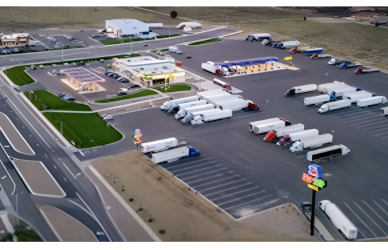Proposed changes to speed limit regulations remain a prominent subject of discussion across various statehouses, with several states contemplating legislative adjustments. The Owner-Operator Independent Drivers Association emphasizes the importance of safety on roadways, suggesting that uniform speed limits for all vehicles contribute to overall road safety. However, the association does not advocate for a specific speed limit.
In Indiana, there is a notable speed limit differential for cars and trucks, with cars allowed to travel at 70 mph on major roadways, while vehicles weighing over 26,000 pounds are limited to 65 mph. Efforts to eliminate this speed limit disparity in rural areas have been ongoing, as demonstrated by Rep. Mike Aylesworth’s pursuit with bill HB1055.
He feels a rule revision is necessary in Indiana “to correct a law that is flawed in nature and does nothing to improve highway safety.”
Despite consideration in the House Roads and Transportation Committee, the bill did not progress to a vote, facing opposition from the Indiana Motor Truck Association. Supporters argue that uniform speed limits enhance traffic flow, referencing a study by the Indiana Department of Transportation and Purdue University indicating a potential 20% reduction in crash frequencies with uniform 70 mph speed limits.
Maryland, too, is undergoing potential changes to speed limit rules. A bill, HB278, aims to empower the Maryland State Highway Administration to decrease maximum speeds by 5 mph on urban state highways without necessitating a traffic or engineering study. The bill, approved by House lawmakers, is set to proceed to the Senate Judicial Proceedings.
In Michigan, the Senate Transportation and Infrastructure Committee has advanced HB4012, addressing perceived flaws in how the state establishes local roadway speed limits. Sponsored by Rep. Bradley Slagh, the bill aims to provide flexibility in applying the 85th percentile speed rule, allowing the rounding down of speeds when necessary. The legislation seeks to eliminate the requirement for an engineering and safety study, relying on traffic engineering practices for objective analysis. The bill awaits further consideration on the Senate floor.
In New Jersey, Sen. Declan O’Scanlon sponsors S1652, a bill proposing the use of the 85th percentile formula to set speed limits on limited access highways.
“[The change would result in] the smoothest, safest level of traffic flow and inflict the least amount of arbitrary punishment on people behaving reasonably,” he said.
This approach, if approved, would allow the New Jersey Department of Transportation and other state traffic agencies to employ studies for determining speed limits.
New York is also in the midst of potential speed limit changes. Bills in the Assembly and Senate propose raising the speed limit from 65 mph to 70 mph on interstate highways and other limited access roads, aligning New York with the speeds permitted in many other states.
“The majority of states across the country have state speed limits that exceed 65 mph,” said Tom O’Mara, New York. “New York has failed to keep up with the rest of the country by not adopting a more efficient speed limit. … [My bill] would correct this inefficacy by allowing for a 70 mph speed limit where appropriate.”
Lastly, in Oklahoma, Rep. Ross Ford sponsors HB3894, which seeks to implement a 65 mph minimum speed limit on rural interstate highways, where current speed limits are set at 75 mph, and on Oklahoma turnpikes, where speeds are set at 80 mph.
Source: Land Line











